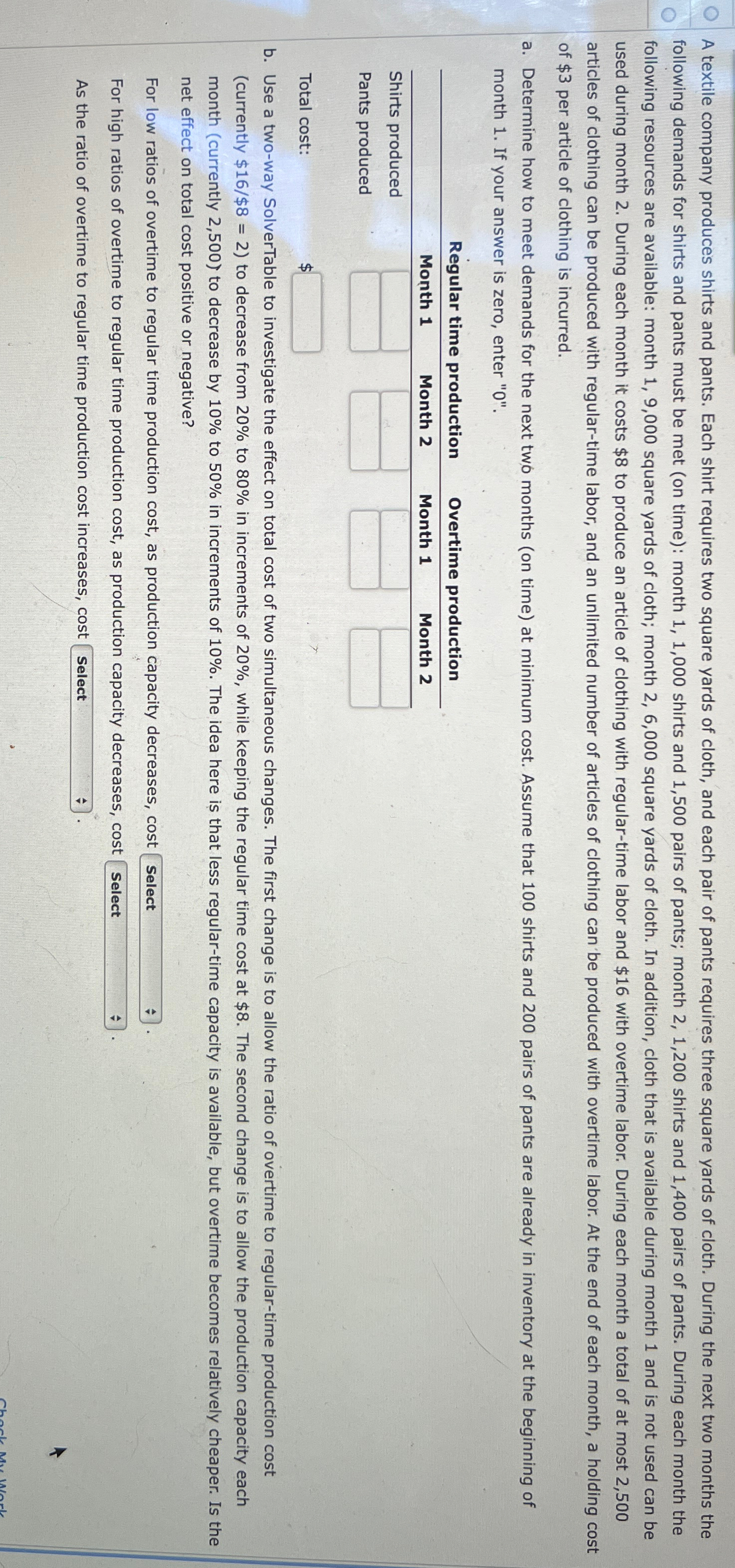Answered step by step
Verified Expert Solution
Question
1 Approved Answer
A textile company produces shirts and pants. Each shirt requires two square yards of cloth, and each pair of pants requires three square yards of
A textile company produces shirts and pants. Each shirt requires two square yards of cloth, and each pair of pants requires three square yards of cloth. During the next two months the following demands for shirts and pants must be met on time: month shirts and pairs of pants; month shirts and pairs of pants. During each month the following resources are available: month square yards of cloth; month square yards of cloth. In addition, cloth that is available during month and is not used can be used during month During each month it costs $ to produce an article of clothing with regulartime labor and $ with overtime labor. During each month a total of at most articles of clothing can be produced with regulartime labor, and an unlimited number of articles of clothing can be produced with overtime labor. At the end of each month, a holding cost of $ per article of clothing is incurred.
a Determine how to meet demands for the next two months on time at minimum cost. Assume that shirts and pairs of pants are already in inventory at the beginning of month If your answer is zero, enter
tableRegular time production,Overtime productionMonth Month Month Month Shirts producedPants produced,,,,Total cost:$
b Use a twoway SolverTable to investigate the effect on total cost of two simultaneous changes. The first change is to allow the ratio of overtime to regulartime production cost currently $ to decrease from to in increments of while keeping the regular time cost at $ The second change is to allow the production capacity each month currently to decrease by to in increments of The idea here is that less regulartime capacity is available, but overtime becomes relatively cheaper. Is the net effect on total cost positive or negative?
For low ratios of overtime to regular time production cost, as production capacity decreases, cost
For high ratios of overtime to regular time production cost, as production capacity decreases, cost
As the ratio of overtime to regular time production cost increases, cost

Step by Step Solution
There are 3 Steps involved in it
Step: 1

Get Instant Access to Expert-Tailored Solutions
See step-by-step solutions with expert insights and AI powered tools for academic success
Step: 2

Step: 3

Ace Your Homework with AI
Get the answers you need in no time with our AI-driven, step-by-step assistance
Get Started


